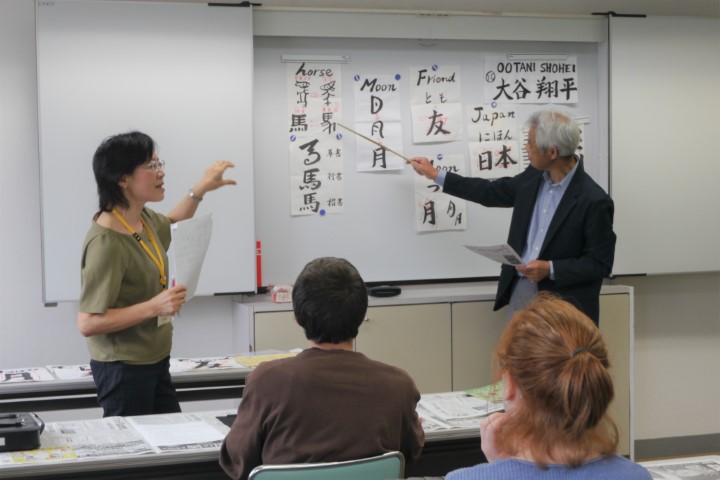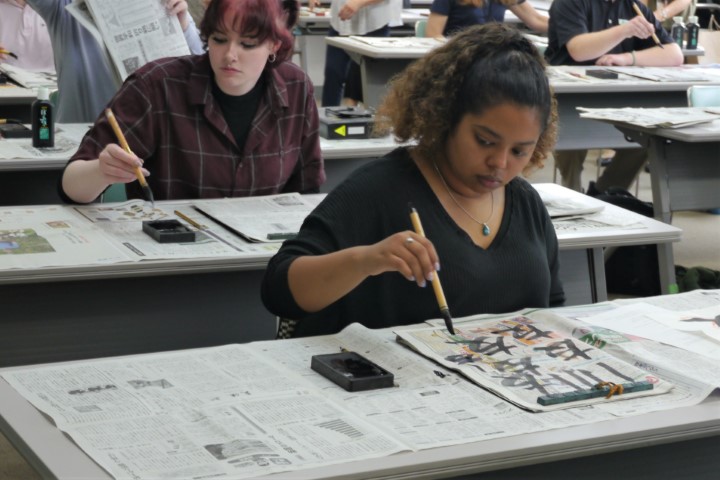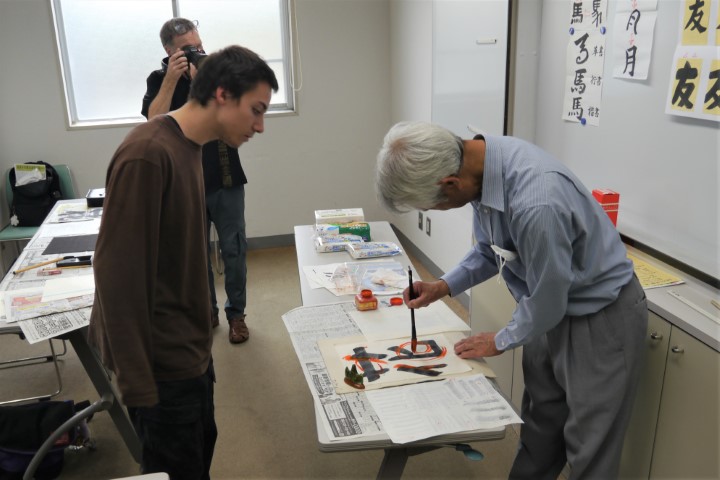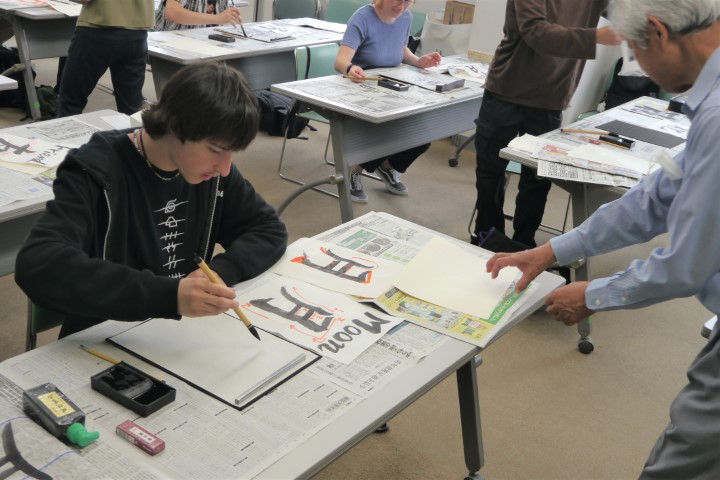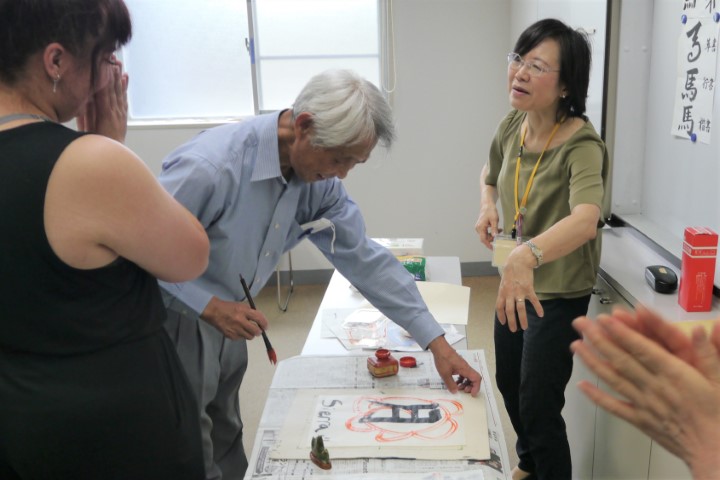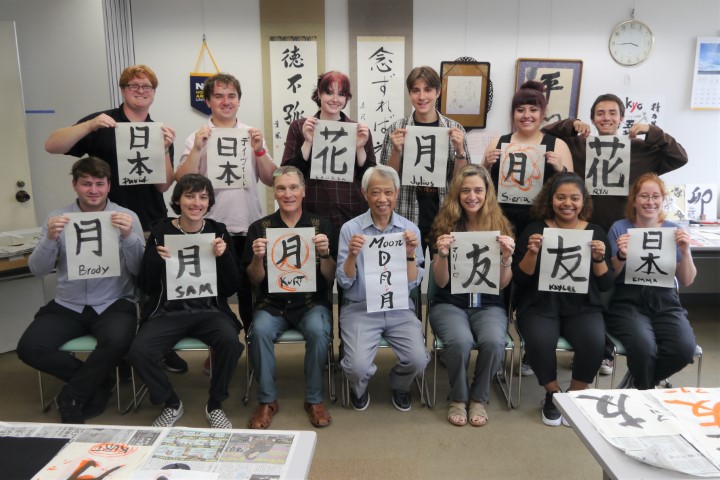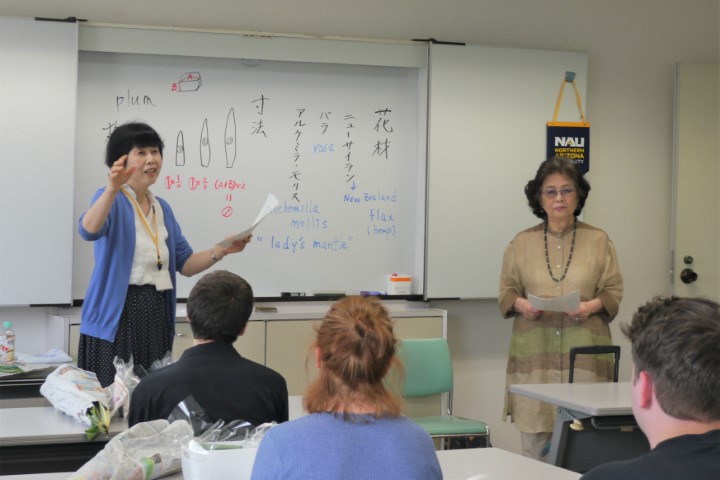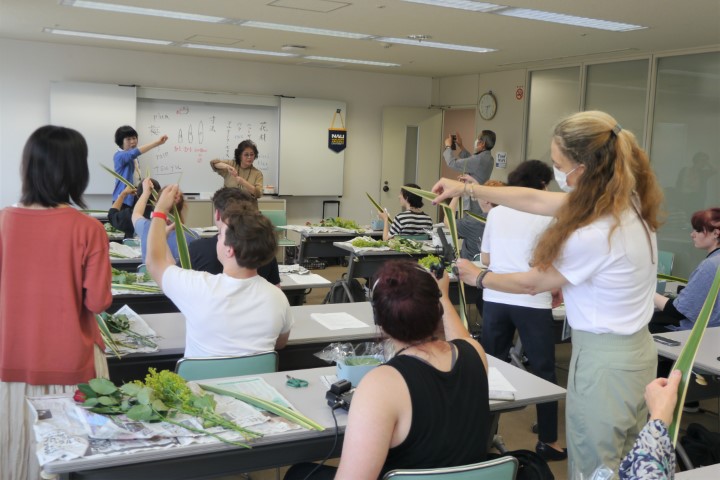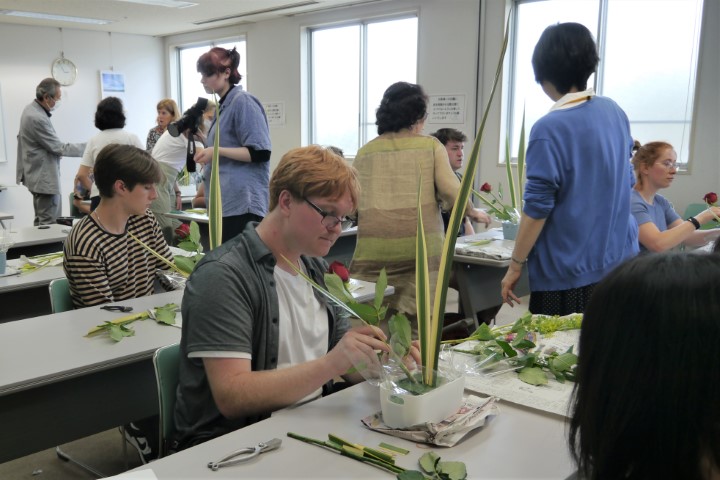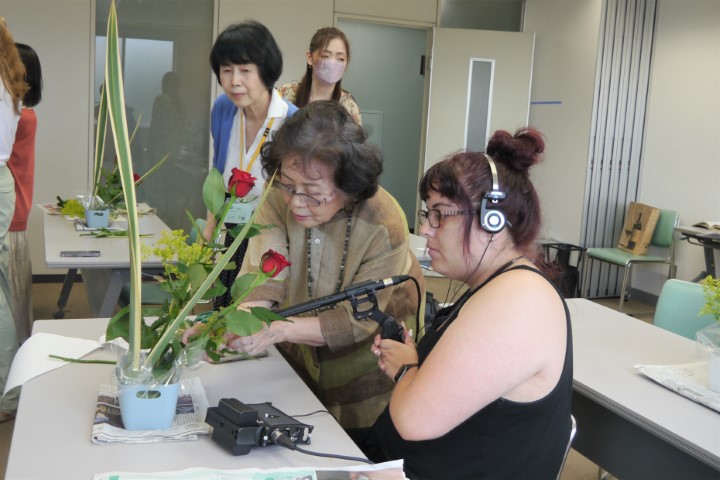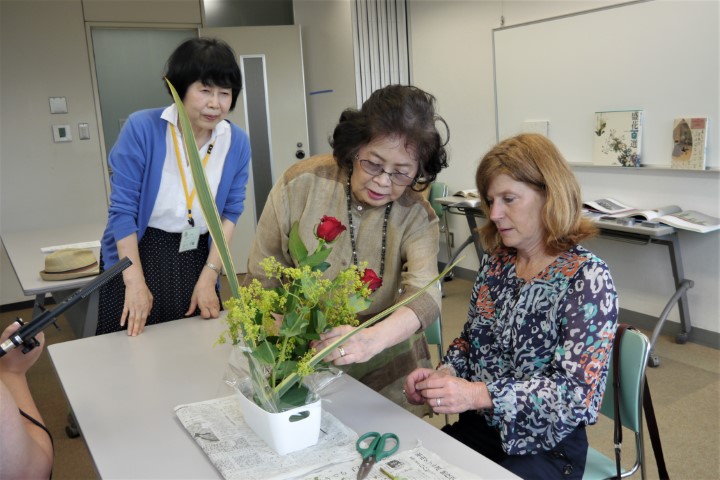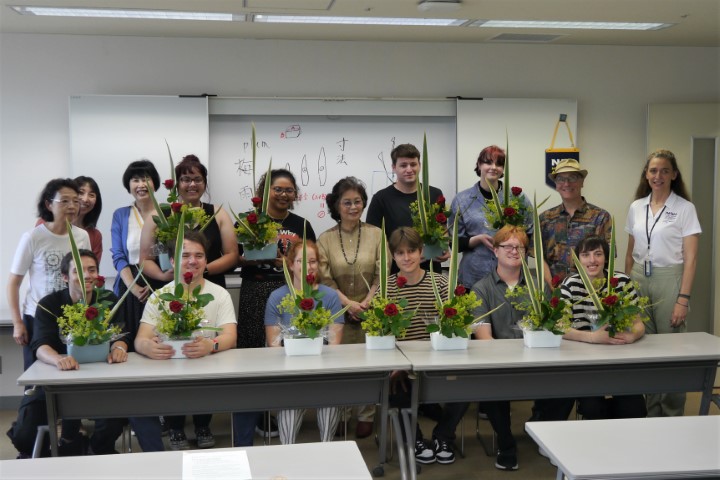 AIRA sent translators to help the students of Northern Arizona University (NAU) experience Japanese cultures in Abiko City. (No.23-5)
AIRA sent translators to help the students of Northern Arizona University (NAU) experience Japanese cultures in Abiko City. (No.23-5)The dates of their cultural experiences with AIRA translators
Japanese calligraphy : Saturday, June 10th, 2023
Kimono wearing : Sunday, June 11
Ikebana : Tuesday, June 13
Video editing : Wednesday, June 14
NAU Professor Kurt Lancaster and his ten students are visiting Japan with the guidance of Ms. Mary Adachi, a former AIRA English instructor. The students belong to NAU’s School of Communication, Film and Media Studies.
The below is how the “Calligraphy” and “Ikebana” classes were held.
1. Japanese Calligraphy Class
Venue : Abiko Civic Plaza Room 1
Date & Time : Saturday, June 10 2:00 p.m. – 4:00 p.m.
Instructor : Mr. Shigeo ARAI (art name: 童風Dofu), AIRA member
Interpreter : Ms. Rie HAMA
Mr. Arai explained the structures of kanji (Chinese characters) and the history of their introduction to Japan, and “文房四宝”, the four essential tools used in Chinese/Japanese calligraphy (brush, ink, inkstone and paper). Ms. Hama interpreted his lecture.
The students chose one character that they wanted to write from “友friend, 月moon, 日本Japan and 花flower). Writing calligraphy with brush and ink was their first experience. They repeated writing and each time Mr.Arai kindly corrected their work and gradually their writing became “calligraphy.”
2. Ikebana Class
Venue : Abiko Civic Plaza Room 1
Date & Time : Tuesday, June 13 2:00 p.m. – 4:00 p.m.
Instructor : Mr. Yasuko Shibata (art name: 香蒲Koho), Ohara School
Interpreter : Ms. Chizu Yamaguchi, Ms. Hitomi Koyama
Ms. Shibata explained the history of Ikebana, the art of arranging flowers, leaves and branches in a vase called “花器 flower bowl.” She also explained the main styles of Ohara School that she belongs to. Ms. Yamaguchi interpreted her lecture. According to one of the major styles of Ohara School, “Moribana”, which features nature reproduced in a shallow vase, the students tried to arrange flowers and leaves. As the instructor and her assistant walked around the room and gave each of them advice, their works got livelier and, adding their own originality, they finally completed their beautiful “Ikebana”, which means “to make flowers alive again,
They asked Ms. Shibata questions like “What’s the difference between Ikebana and Bonsai?”, “How about Ikebana and western flower arrangement?” It seemed they learned a lot about Ikebana.
(Translated by Chizu YAMAGUCHI)

